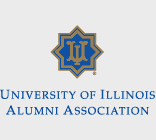CONTENT
- HOME PAGE
- PROLOGUE AN URBAN LEGACY
- INTRODUCING THE WEST SIDE
- 19th-CENTURY CAMERA
- URBAN PHOTOGRAPHERS HINE AND KIRKLAND
- PICTORIAL CHICAGO
- CHICAGO ENLIGHTENED CITY BEAUTIFUL
- CHICAGO GROTESQUE LAWLESS STREETS
- HULL-HOUSE "OASIS" IN A SLUM
- IMMIGRANT EMIGRANT CITY
- "ALIEN" COLONIES
- "RACE" COLONIES
- GHETTO LIVING
- "CHEAP" ECONOMY
- FAMILY
- AMUSEMENTS
- PUBLIC HEALTH
- TENEMENTS
- URBAN SOCIOLOGY CHICAGO SCHOOL
- MAXWELL STREET ARCHITECTURE TOUR
- CHICAGO CITY MAPS
PICTURE POSTCARDS
In the generation 1870-1900, privately printed advertising and exposition picture cards appeared in abundance both in the U.S., and also in Europe. In the U.S. the picture postcard first appeared as a souvenir mailing card featuring buildings and Fair venues at the 1893 Chicago Columbian Exposition. On this privately published picture card no writing was permitted on the back and the postage was the 2 penny letter rate. Only the government postoffice could sell plain postcards at one penny. This changed in 1898 when Congress approved the now familiar privately printed picture postcard on the front side with address and writing on the back, and set postage at the one penny rate.
The beginnings of an industry took off selling an increasingly popular product. In 1908 more than 677 million postcards were mailed in the U.S. As personal travel in the U.S. increased with the later nineteenth century expansion of railroads, automobiles, bicycles, improved roads, and cheaper transportation costs, the market for scenic and picturesque postcards grew exponentially.
In the eyes of the viewer, the cards projected an affirmation of aesthetically pleasing spaces and normalcy. For example, the picture postcard sold by Hull-House in Chicago appeared as a shining brick “City Upon a Hill,” standing alone and rising on a wide, clean, and uncrowded Halsted Street. The “slum” with the saloons, loitering unemployed men, hawking peddlers, and varieties of market wagons were all absent from view.
The Detroit Publishing Company with its large archive of professionally produced scenic photographs went into the profitable business of selling picture postcards as momentos to visitors and tourists as they traveled around the country. The backside of the picture card was divided between the Address and the Correspondence section often with familiar jottings to family and friends back home such as the weather, “it is lovely and warm here today,” travel plans, “I will come home Sunday night if nothing prevents,” and the personal significance of the picture on the card “I was baptized in this church,” or “I am glad to hear you have all your corn picked. On the other side is a photo of the college which I attend.”
Purchasing a stereotypical postcard view, jotting a quick sentiment, and mailing it without delay was more convenient and less demanding than taking pen to paper and composing in some detail a personal letter, possibly evoking awkward thoughts and stirring up ambiguous or competitive family and neighborly feelings. In many cases the inscriptions on the cards have nothing to do with the picture. In the many picture cards without comment, the image alone served as a basic act of communicating a greeting.
Like Facebook and Twitter more than a century later, the picture postcard functioned to serve an interactive audience.
PHOTO GALLERY
This collection of eighty digitized colored postcards with inscriptions is owned by Mary Ann Johnson, former director of Hull-House.
Represented here are the following locations: Maxwell Street Market, Madison & Halsted Street shopping district, 12th Street Blue Island commercial district, Catholic and Protestant Churches on the west side, the Union Park and Ashland Avenue residential district, and the West Side Medical Center.
As evidenced by the postcard collection, the complex of major institutions in the West Side Medical Center–hospitals, clinics, colleges, training schools, institutes–attracted a significant number of medical staff, students, patients, and visitors from the Midwest.
The institutions included both old and new Cook County Hospitals; Rush Medical College and Presbyterian Hospital, and their nursing schools and dormitories; the Mary Thompson Hospital for Women and Children; the Chicago Homeopathic College; University and West Side Hospitals, two early private institutions; College of Physicians and Surgeons, predecessor to the University of Illinois Medical School; the Illinois School of Dentistry; the Illinois Training School for Nurses.
Examples of inscriptions. On a Rush Medical Hospital Picture Card, a correspondent living in Chicago wrote to a town in Michigan: “Not much to write. All are pretty well only Fred. He is trying to be a Christian and a minister comes in every day to see him.”
On a Presbyterian Hospital, Sprague Home for Nurses picture card, a first-year student nurse wrote home: “Dear Folks. This is where I live now. I was on duty from 8 to 12pm. This afternoon I went for a short walk with 3 girls, two of whom have attended school here three years and know there (sic.) way. I’m hoping to hear from you tomorrow. I like it hear (sic.) fine. Don’t work too hard any of you.” bjb



